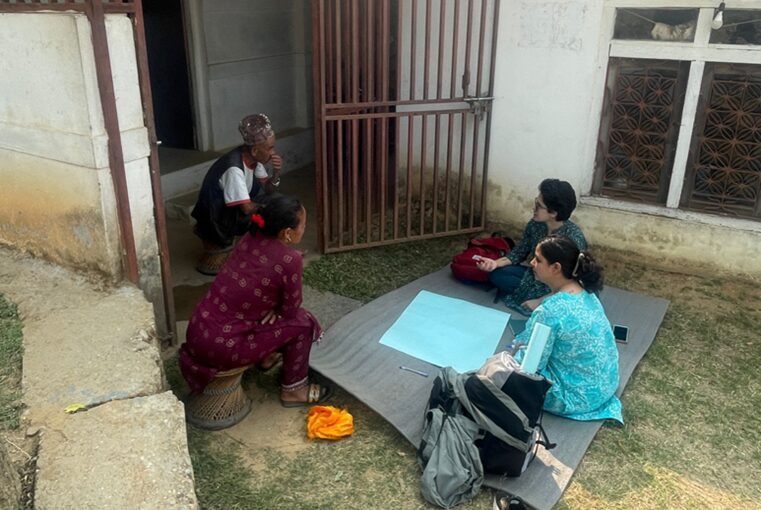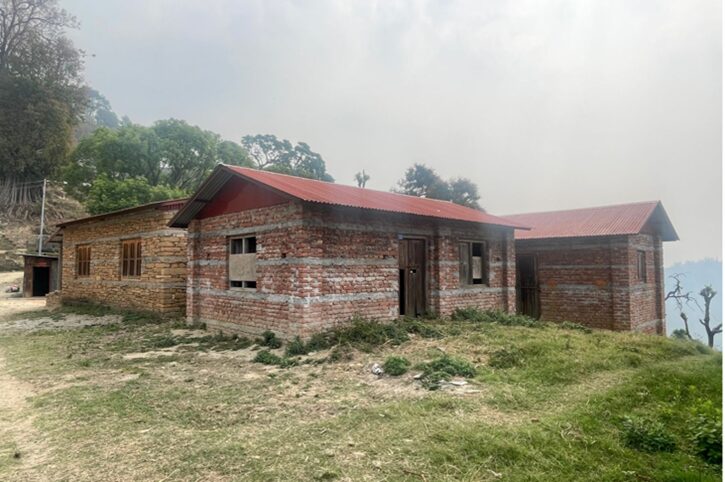
“What season is it?” Changing agrarian landscapes in the high hills of Indrawati
/
Authors: Sony K.C. and Ankur Koirala, (HiCAS, Kathmandu University)
In the tranquil hills of Indrawati rural municipality, time seems to stand still amidst the ever-shifting agrarian landscape. As the sun rises over the majestic hills, casting a golden glow upon the lush greenery, one cannot help but marvel at the resilience of the people who call this place home. Melamchi, the prominent river in the region, flows beneath the hills, moulding them into a beautiful piece of tapestry.

Image: Roshan Bhatt
Demographically, the people in Indrawati come from various ethnic backgrounds. According to the spokesperson for the municipality, there is a high representation of Tamang ethnicity followed by Brahmins, Chhetris, Janjatis and Dalits. The rural municipality incorporates 6780 households (National Statistical Office, 2078), within 12 wards. An agrarian territory by nature, the major crops grown in Indrawati in the past have been maize, millet, paddy and peanuts. At the point of writing, the production of peanuts has been put on hold due to lack of yield.
Early marriage and marriage within the wards have been highly prevalent in the past and though these practices have declined, they have not stopped altogether. This naturally had an effect on the internal migration rate; interaction between the wards was significant, creating values of community and belongingness. With marriage happening internally within the rural municipality itself, migrants tended to naturally accept agriculture as their source of livelihood. It was not until 2001 that external/ international migration was first observed when a male migrant from Ward 4 (Nawalpur), went to Korea for labour work for the first time.
Indrawati is sure to charm travelers at first glance. But beneath the surface of this idyllic scene lies a story of hardship, resilience, and the invisible effects of climate change.
For decades, the people here have lived in harmony with the land, tending to their crops and livestock with care and reverence. But the events of the past decades have brought about a profound shift in their way of life. An elderly respondent, who came to Nawalpur when she was married young, at 11 years old, reported that she started noticing subtle changes in the village in 1979 when the available manure was no longer sufficient for the land. She recalls, “when I came to this village after getting married in 1979, my husband’s family used to produce 500kgs of gahat daal, (a legume with high nutrition value), on 12 ropani of land. But within a decade the production of gahat daal was reduced to 3.2kgs.”

Image: Roshan Bhatta
The fertile land was already beginning to change due to severe drought and lack of irrigation. The crops grown used to be healthy, but by 1982, due to the widespread usage of chemical fertilizers like Urea, which began to affect the alluvial soil, the produce was not as luscious or edible as before. Further complicating the issue, the predator population of wild boars, monkeys and deer started to increase rapidly. Undoubtedly, these predators caused severe damage to the crops, livestock and even the villagers. With no interventions in place to tackle the animals’ attacks on farms, the massive impact of human-wildlife conflict continues unabated, and the villagers are left traumatized and in despair.
These changes to the land became even more evident when the devastating earthquake of 2015 hit, a natural disaster that shook the very foundation of the villagers’ existence. In the aftermath of the earthquake, the bountiful land of Indrawati began to wither and fade. The rivers and other water sources ran dry, the crops wilted, and the once vibrant community found itself struggling to survive in the face of mounting challenges.

Image: Roshan Bhatta
Action plans were formulated by the local government to aid the people with their livelihood as part of the post disaster reconstruction. In most of the settlements, roads have been dug and, in some settlements, those roads have been pitched. Additionally, this district witnessed a massive re-construction of the houses, shifting from mud and stones to concrete walls and floors and tin roofs, which was the Nepal government’s contribution to the post-earthquake efforts.
While the decline in agricultural production began around 1981, public perception tends to attribute the intensity of this disaster to the earthquake. But although its impact was massive, it was not just the earthquake that brought about these changes to the landscape; it was something far more insidious – climate change.
For the people of Indrawati, climate change is not just a distant threat; it is a reality that they grapple with every single day. The seasons no longer behave as they once did, with rains failing to come on time and droughts becoming more frequent and severe. The land, once fertile and abundant, now lies parched and barren, unable to sustain the crops that once flourished upon it. The two most precious resources for farmers, land and water, are both deteriorating with every passing day; so much so that farmers find themselves constantly having to wonder, what season is it?

Image: Sony K.C.
But perhaps the most heartbreaking aspect of this story is the human toll it has taken. Families torn apart as young people are forced to leave their homes in search of work elsewhere. Elders who can do nothing but watch as their land slowly slips away from them. And children, born into a world unsure of what the future holds for them.
The villagers may not be able to see climate change with their own eyes, but they can feel its effects in every dry riverbed, every failed harvest, and every empty stomach. Yet amidst the despair, there is hope. The people of Indrawati are resilient, resourceful, and determined to fight for a better tomorrow if they can get the support they need to do so. They are waiting and hoping for intervention from the local government.
As we reflect on the plight of the people of Indrawati, let us remember that climate change is not just a distant threat; it is a reality that is happening here and now and everywhere. And as it impacts the agrarian context, we are already seeing the effect in the global shortages of some foods. And since farmers are impacted the most, taking action to support the effects of the climate crisis on agrarian land has to be a priority for areas like Indrawati. And for this to happen, the local governments themselves need to be equipped with the policies and effective intervention mechanisms that can support the locals who rely on agriculture for their living.
References
National Statistical Office. (2078). Census Nepal. Retrieved from https://censusnepal.cbs.gov.np/: https://censusnepal.cbs.gov.np/results/population?province=3&district=24&municipality=6
Published
CLARE Projects
CLARE Partners

